Chara: The Rooted Alga with a Competitive Edge
Biology, Habitat, Ecological Role, and Proven Management Options for Musk Grass
By

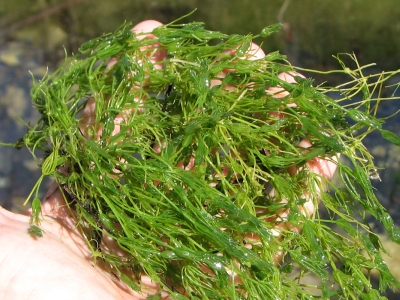
Habitat
Chara can be an early indicator of lake eutrophication and the switch from clear water to algae dominance. Of the 300 different species of Chara found worldwide, most will be found in low to mildly eutrophic lakes. As the lake becomes more eutrophic, Chara abundance will often decline. Chara vulgaris is a common species in the US, inhabiting shallow, mildly eutrophic lakes and ponds. Hard waters, represented by high alkalinity, are required for all Chara species to proliferate and form dense canopies (Kufel and Kufel 2002). Hardwater lakes are abundant in calcium cations, which are usually accompanied by bicarbonate anions (HCO3–), the primary inorganic carbon source for aquatic plants and macroalgae. Charophytes have a higher affinity to bicarbonate than aquatic plants, allowing for a competitive advantage over them. In dense Chara beds, so much bicarbonate is depleted that calcite encrustation will form on Chara (up to 60% dry weight of charophytes is calcium carbonate (CaCO3); Kufel and Kufel 2002; Hidding et al. 2010). Chara has been found to grow best on muddy substrates with the rhizoid (root-like structure) attached to the bottom (Kufel and Kufel 2002).
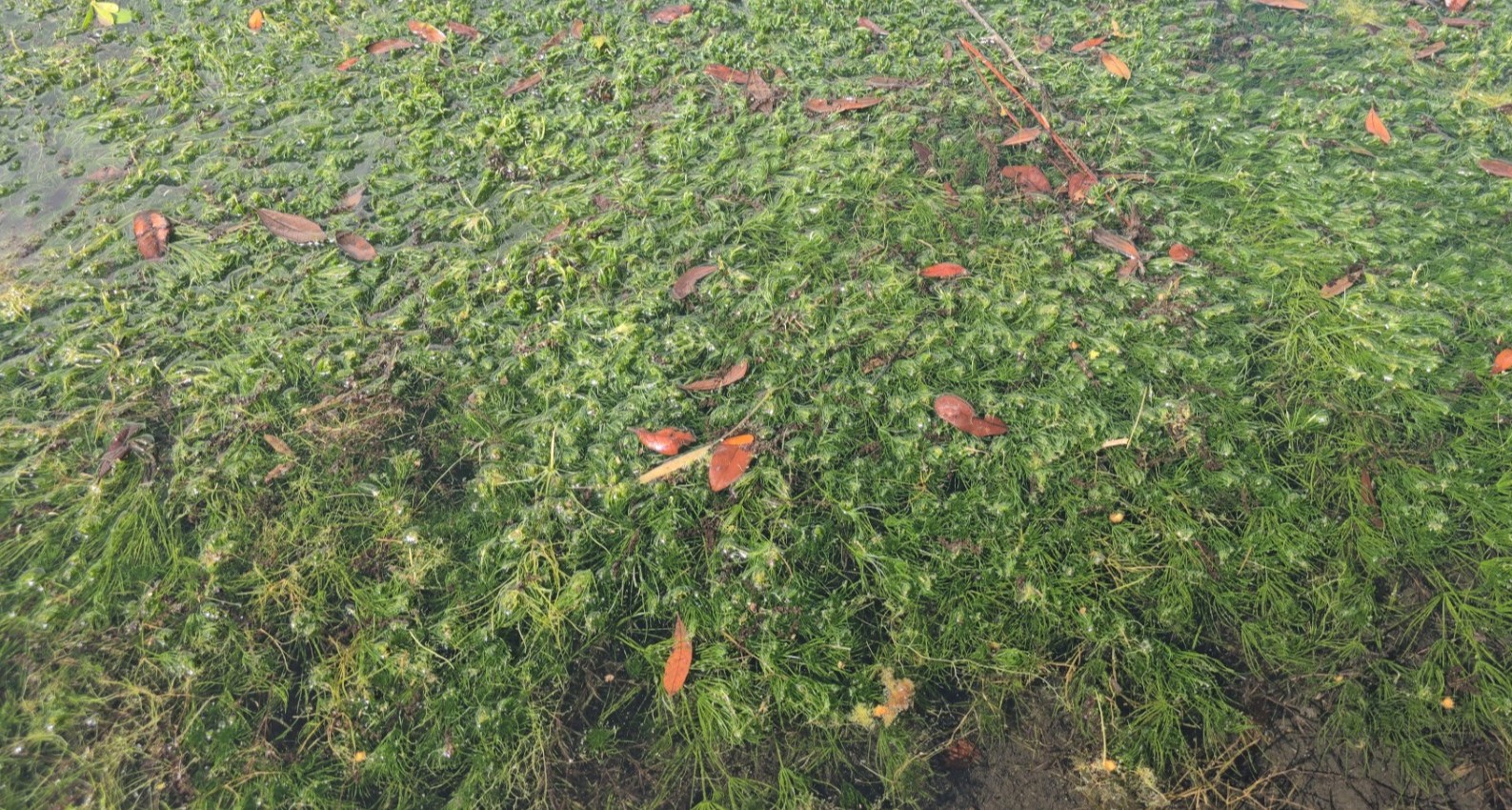
Ecological Importance
Chara can provide critical habitat and food for aquatic life and can uptake large amounts of nutrients from the water and sediments. For example, a 1-acre area of Chara Vulgaris at a median biomass and nutrient content observed in the literature (2,203 lbs. per acre, 1 mg/g P and 9.3 mg/g N dry weight) is equal to 22 lbs. of P and 205 lbs. of N being held within the cells of Chara (Pereyra-Ramos 1981). Having some level of Chara in a lake is often beneficial to support a lake’s fishery and overall water quality, but too much coverage and/or density can promote overly abundant prey and stunted fish communities and create recreational nuisances (Wetzel 1990; Baker et al. 1993). A good rule of thumb is 20-30% macrophyte coverage without topping out to the surface.
Management
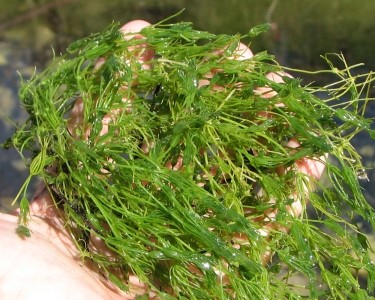
Another new eco-friendly approach to keep Chara biomass in check is to focus on sediment nutrients and muck. This is because 1) Chara loves mucky substrates as outlined earlier, and 2) Chara’s sediment phosphorus uptake is entirely from the mobile sediment pool in the surface sediments (~10cm; Kufel and Kufel 2002). MuckBiotics is a highly effective probiotic (beneficial bacteria) tablet that can digest organic matter (muck/sludge), while boosting biological nutrient removal and improving water quality. Add MetaFloc with MuckBiotics to address all mobile P in the sediment, and it’s a one-two punch for long-term success. New sediment P fractionation testing can determine exact dosing rates for both products.
Works Cited
Hidding, B., R. J. Brederveld, and B. A. Nolet. 2010. How a bottom‐dweller beats the canopy: inhibition of an aquatic weed (Potamogeton pectinatus) by macroalgae (Chara spp.). Freshwater Biology 55: 1758–1768.
Kufel, L., and I. Kufel. 2002. Chara beds acting as nutrient sinks in shallow lakes—a review. Aquatic botany 72: 249–260.
Pereyra-Ramos, E. 1981. The ecological role of Characeae in the lake littoral. Ekol. pol. 29: 167–209.
Wetzel, R. 1990. Detritus, macrophytes and nutrient cycling in lakes. Mem. Ist. Ital. Idrobiol 47: 233–249.
Tip of the day:
Related Products
AquaSticker
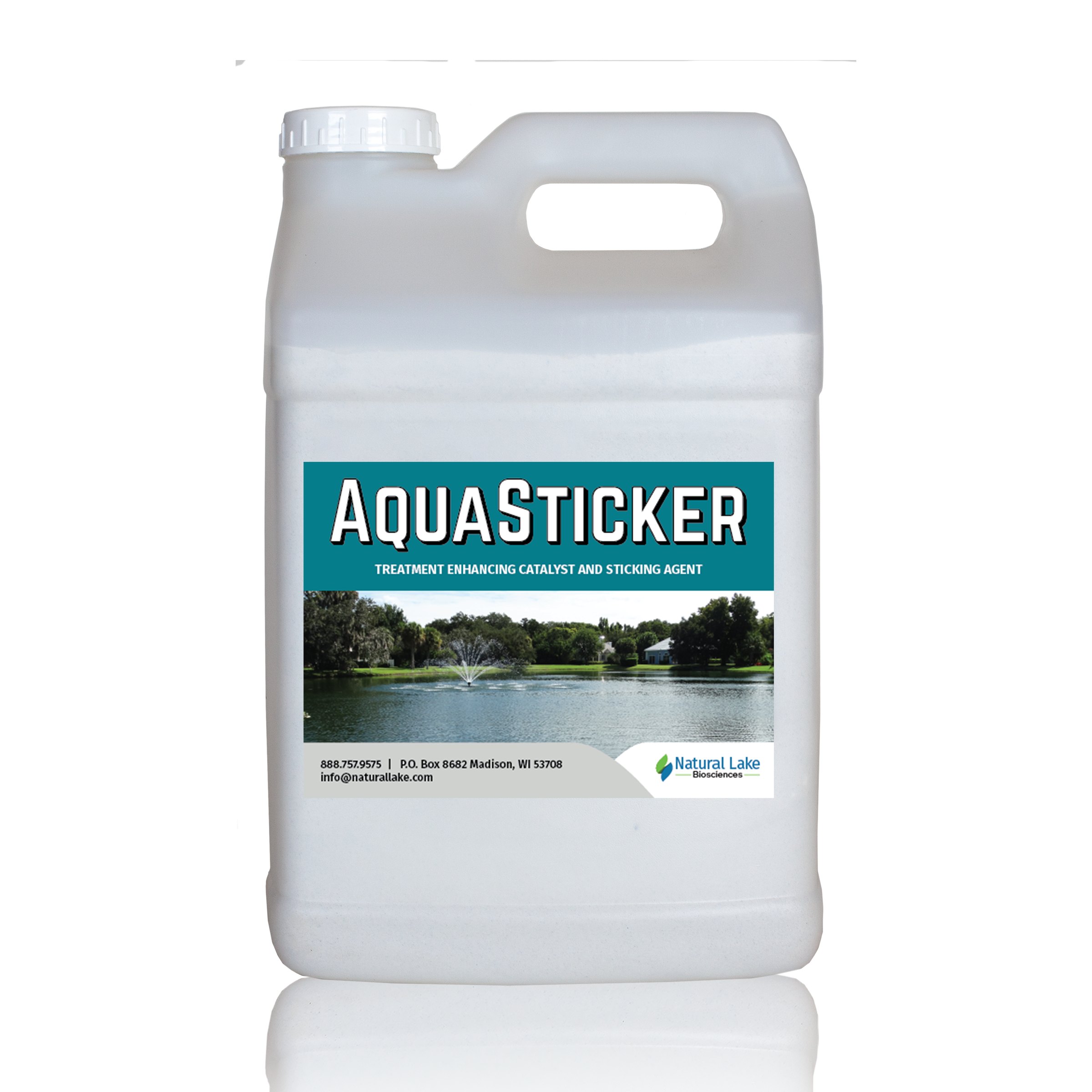
MuckBiotics

MetaFloc
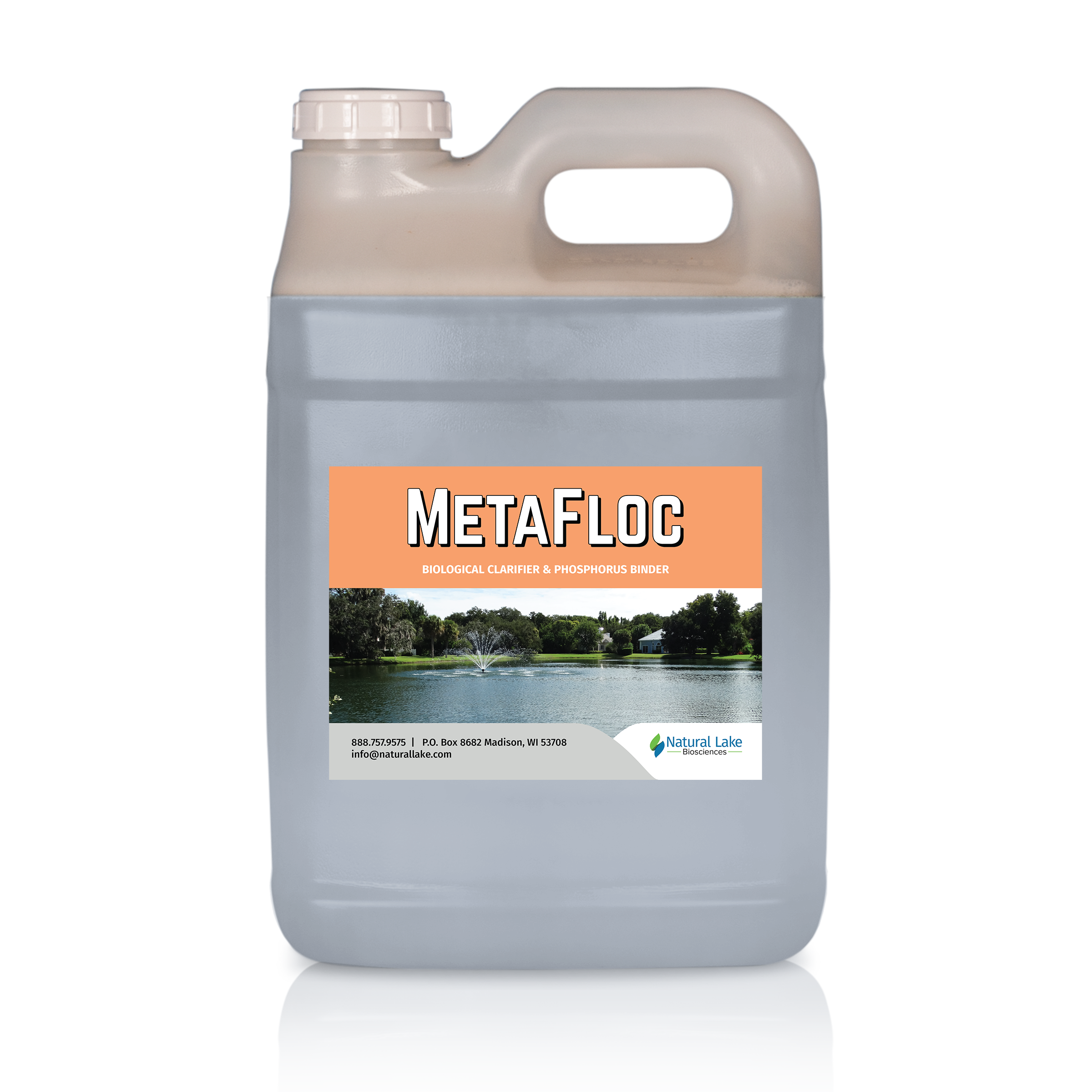

About the Author
Patrick Goodwin, M.S., CLM, serves as a Water Resource Specialist at Natural Lake Biosciences, bringing over a decade of expertise in water resource management. He specializes in collecting data to assess nutrient loading and its impacts on algal blooms and water clarity. With a proven track record of restoring numerous water bodies, Patrick is recognized as an authority in implementing oxygenation and circulation techniques.

0 Comments